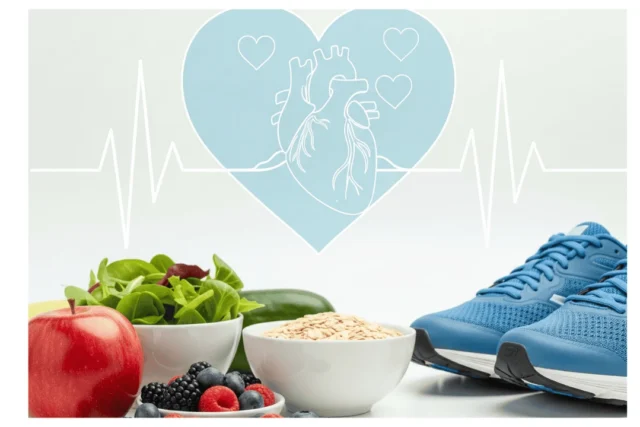Contents
- 1 Lowering Cholesterol: A Comprehensive Guide to a Healthy Heart
- 2 Understanding Cholesterol: The Good and the Bad
- 3 Pillar 1: Dietary Changes for a Healthier Profile
- 4 Pillar 2: The Power of Physical Activity
- 5 Pillar 3: Key Lifestyle Habits
- 6 The Medical Approach
- 7 Conclusion: A Path to a Healthier Heart
Lowering Cholesterol: A Comprehensive Guide to a Healthy Heart
Cholesterol, a waxy, fat-like substance found in your blood, is essential for building healthy cells. However, when its levels become too high, it turns into a silent and dangerous threat to your cardiovascular health. High cholesterol, or hypercholesterolemia, can lead to the buildup of plaque in your arteries, narrowing them and increasing your risk of heart attack, stroke, and other serious health issues. The good news is that for most people, managing and lowering cholesterol is a manageable process that doesn’t require a complete lifestyle overhaul. By making smart changes to your diet, exercise routine, and daily habits, you can take control of your cholesterol levels and safeguard your heart.
Disclaimer: This article is for informational purposes only and is not a substitute for professional medical advice. Always consult a qualified healthcare provider for a diagnosis and treatment plan for your specific health needs.
Understanding Cholesterol: The Good and the Bad
To effectively manage your cholesterol, it’s important to know the difference between the two main types:
- LDL (Low-Density Lipoprotein): Often referred to as “bad” cholesterol, high levels of LDL can lead to the buildup of fatty deposits in your arteries, which increases your risk of heart disease.
- HDL (High-Density Lipoprotein): Known as “good” cholesterol, HDL acts as a scavenger, carrying excess cholesterol from your arteries back to your liver, where it is broken down and removed from your body.
The goal is to lower your LDL and raise your HDL, and these changes are primarily driven by your diet and lifestyle.
Pillar 1: Dietary Changes for a Healthier Profile
Your diet is the most powerful tool you have for controlling cholesterol. What you eat has a direct impact on your blood lipid levels.
- Embrace Soluble Fiber: Foods rich in soluble fiber can significantly lower your LDL cholesterol. Soluble fiber binds to cholesterol in your digestive system and helps remove it from your body. Excellent sources include oats, barley, apples, citrus fruits, beans, lentils, and chickpeas.
- Choose Healthy Fats: Replace saturated and trans fats with healthier monounsaturated and polyunsaturated fats. Saturated fats, found in red meat, full-fat dairy, and processed foods, are the primary culprits for raising bad cholesterol. Instead, opt for healthy fats found in avocados, olive oil, nuts (almonds, walnuts), and fatty fish like salmon and mackerel, which are rich in Omega-3 fatty acids.
- Eat More Fruits and Vegetables: A diet rich in plant-based foods is naturally low in saturated fats and high in fiber, vitamins, and antioxidants. These nutrients help reduce inflammation and protect your heart.
- Limit Red Meat and Processed Foods: These items are often high in saturated fats and sodium. Cutting back on red meat, sausages, bacon, and packaged snacks can make a huge difference in your cholesterol levels.
Pillar 2: The Power of Physical Activity
Regular exercise is a non-negotiable part of any cholesterol-lowering plan. It’s an incredibly effective way to raise your HDL cholesterol and improve your overall cardiovascular health.
- Aerobic Exercise: Aim for at least 30-45 minutes of moderate-intensity aerobic exercise most days of the week. Activities like brisk walking, jogging, cycling, swimming, and dancing are all great choices. Consistency is more important than intensity.
- Strength Training: Incorporating strength training, such as lifting weights or doing bodyweight exercises, can also help improve your cholesterol profile and overall health.
Pillar 3: Key Lifestyle Habits
Beyond diet and exercise, a few key lifestyle changes can have a profound impact on your cholesterol levels.
- Quit Smoking: Smoking is one of the worst things you can do for your heart. It damages the walls of your blood vessels and significantly lowers your HDL cholesterol. Quitting smoking is one of the most effective ways to raise your good cholesterol.
- Moderate Alcohol Consumption: While some studies suggest moderate alcohol intake may raise HDL, excessive drinking can have severe negative effects on your heart, liver, and overall health. It’s best to limit alcohol consumption.
- Maintain a Healthy Weight: Being overweight or obese, especially around the abdomen, is directly linked to higher LDL and lower HDL cholesterol. Losing even a small amount of weight can have a positive impact on your cholesterol levels.
The Medical Approach
For some people, diet and lifestyle changes may not be enough to control their cholesterol. In such cases, your doctor may recommend medication, such as statins, to help lower your cholesterol levels. It’s crucial to follow your doctor’s advice, take any prescribed medication as directed, and continue to maintain a healthy lifestyle.
Conclusion: A Path to a Healthier Heart
Lowering cholesterol is a journey of conscious choices and consistent effort. It’s a commitment to a lifestyle that prioritizes a heart-healthy diet, regular physical activity, and positive habits. By understanding the basics of cholesterol and taking proactive steps to manage it, you are not just improving a number on a lab report; you are actively working to protect your most vital organ. Start today by making one small, positive change, and put yourself on the path to a longer, healthier life.
The Science of Weight Loss: Debunking Myths & Finding Success









